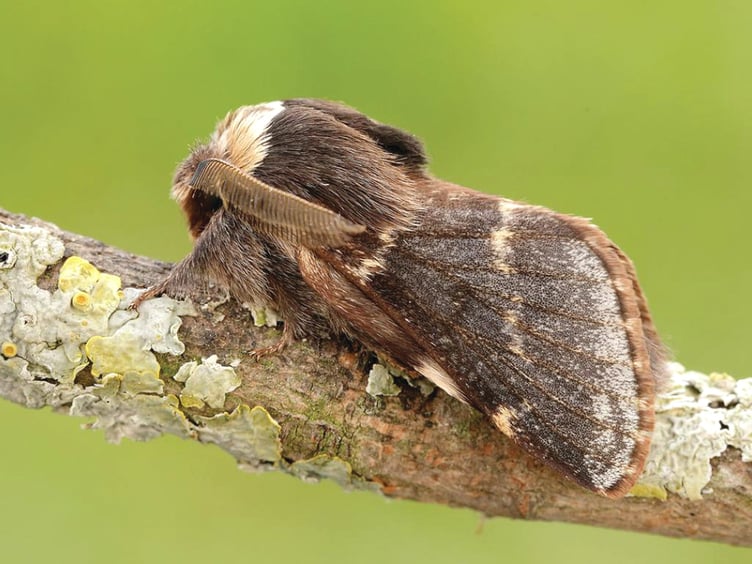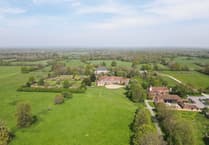YOU may not see butterflies aflutter this month, but three varieties of moth are active in southern England. Have you seen any of them?
The aptly named December Moth is a fairly common species and can be spotted on the wing over much of Britain in November and December. It is mainly found in woodland but also in scrub, hedgerows and gardens.
Its forewings are charcoal grey-brown in colour with wavy creamy white markings. The wingspan is from 30 to 45mm, the females being much larger than the males.
The adult moths are incapable of feeding, using the energy stored when feeding as a larva. They fly at night and are attracted to light.
They lay their eggs during December on twigs and branches of a variety of broadleaved trees including oak, birch, elms, hawthorn and blackthorn. The eggs survive through the remainder of the winter, hatching into larva in the spring, when they feed on the leaves of the host trees.
The Mottled Umber is another common brown moth at this time of year in suburban areas as well as woodlands. The females are completely wingless. The males have brown wings which are variable in appearance: the wings of some are mainly brown, but many have distinctive brown bands on a lighter brown background, and a dark spot on each wing. The wingspan is from 30-40mm.
Mottled Umber caterpillars feed on broadleaved trees and shrubs, including oak, birch, hazel, hawthorn, blackthorn, apple, dog rose, sycamore, hornbeam and elm. It too overwinters as an egg.
The third moth to spot this month is another aptly named species: the Winter Moth. It flies from October to January and is attracted to light.
The Winter Moth is a medium-size moth, with a wingspan range from 22-28mm. It can be found in all habitats and is often seen resting on tree trunks and in car headlamps when driving along country lanes.
The males and females look very different. The females have only short stubby wings and cannot fly – they crawl up a tree trunk and give off pheromones to attract a mate. Eggs are laid on twigs or in cracks in the bark of various broadleaved trees and shrubs, where they spend the rest of the winter.
The pale green caterpillars hatch in the spring as the buds are opening and then feed on the foliage. They can “balloon” from tree to tree by spinning a silk thread and using the breeze to carry them along to the next food source. In early June the caterpillars fall to the ground to pupate.
Great tits and blue tits feed their young on Winter Moth caterpillars and will time their breeding to coincide with the moth’s lifecycle.
I am grateful to the charity Butterfly Conservation (www.butterfly-conservation.org) for suggesting this feature and for allowing us to publish their photos by Iain H Leach and Tamas Nestor.





Comments
This article has no comments yet. Be the first to leave a comment.